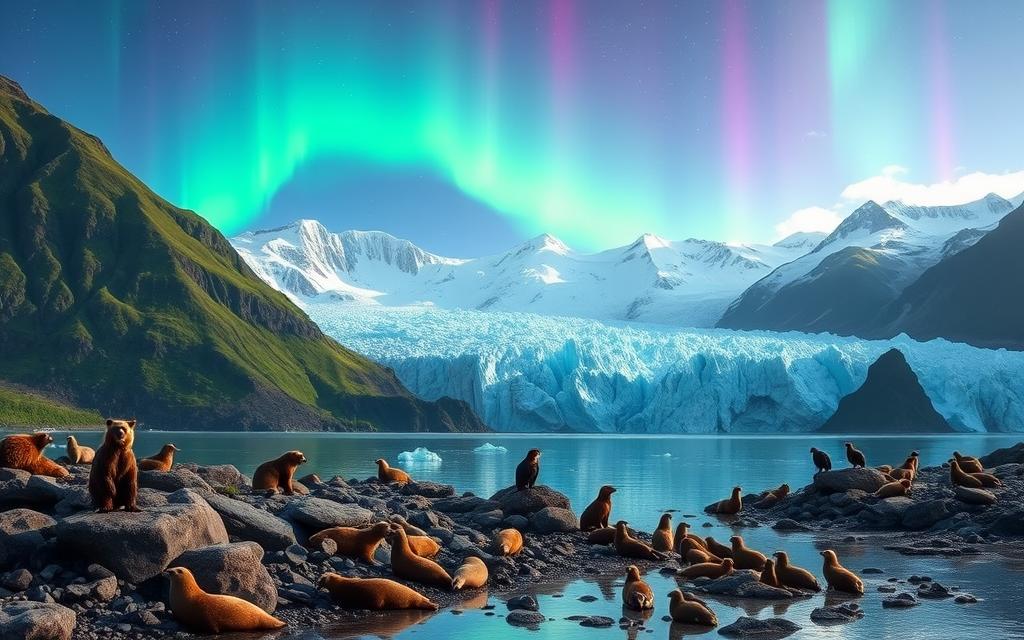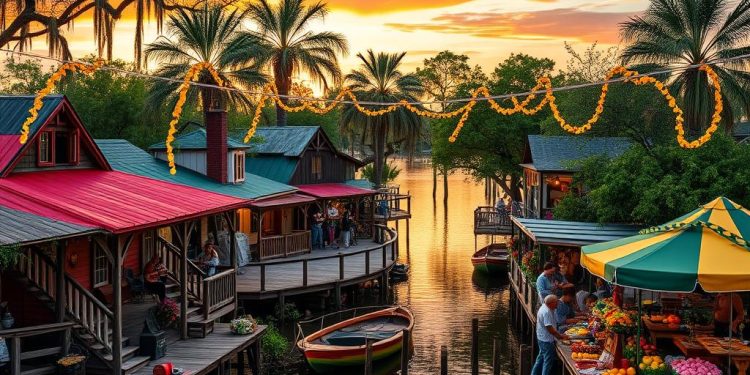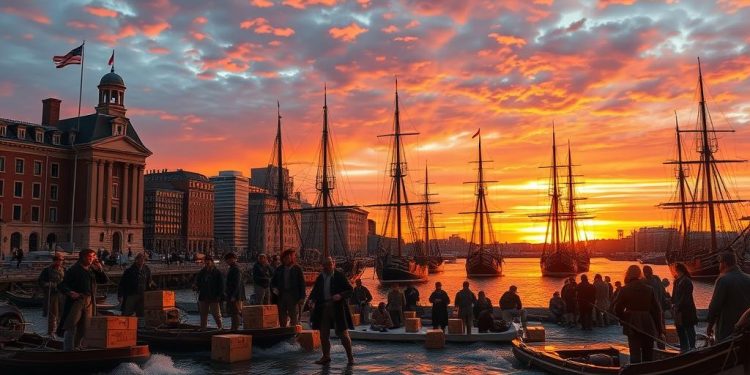Welcome to Alaska, a breathtaking land that captivates your senses with its stunning natural beauty. This remarkable state is characterized by its expansive landscapes, towering glaciers, and vibrant wildlife. Covering about 5% of its land with over 100,000 glaciers, Alaska offers a dazzling display of ice formations, each with its own unique story. As you explore, you’ll discover a multitude of outdoor adventures waiting to be experienced, from glacier hikes to wildlife viewing.
Alaska’s diverse ecosystems are home to an astonishing array of wildlife, including around 400 species of birds, over 50 mammal species, and an estimated 30,000 moose, showcasing the state’s rich biodiversity. With your heart set on adventure, you’ll find that the wonders of Alaska make it a must-visit destination for nature enthusiasts and thrill-seekers alike.
The Majestic Glaciers of Alaska
Alaska, renowned for its stunning landscapes, is home to a myriad of glaciers that tell a story of natural beauty and geological history. These icy giants shape the territory’s remarkable scenery and serve as vital indicators of climate change. Understanding the types of glaciers found here and visiting significant ones offers an unforgettable experience for travelers.
Types of Glaciers in Alaska
In Alaska, glaciers can be categorized into several types, each formed through distinct geological processes:
- Valley Glaciers: Typically found in mountainous regions, these glaciers flow down valleys and can reshape the terrain significantly.
- Tidewater Glaciers: These glaciers terminate at the sea, frequently calving into icy waters, creating spectacular scenes.
- Piedmont Glaciers: Formed when valley glaciers spill out onto a broad plain, they spread out and can create stunning expanses of ice.
Notable Glaciers to Visit
Among the numerous glaciers in Alaska, a few stand out for their breathtaking beauty and accessibility. The Mendenhall Glacier, located near Juneau, is renowned for its vibrant blue ice and visitor-friendly trails. Glacier Bay National Park hosts an impressive collection of glaciers, attracting adventurers who enjoy kayaking and wildlife watching while experiencing the grandeur of nature. Each visit to these notable glaciers offers a chance to connect with Alaska’s breathtaking environment and witness the impacts of climate change firsthand.
| Type of Glacier | Description | Location |
|---|---|---|
| Valley Glacier | Glacier flowing through a valley | Kenai Peninsula |
| Tidewater Glacier | End where the glacier meets the ocean, often calving | Glacier Bay National Park |
| Piedmont Glacier | Spreads onto a plain after leaving a valley | Wrangell-St. Elias National Park |
Wildlife Encounters in the Untamed Wilderness
Alaska’s wilderness is a profound testament to the beauty of nature, where wildlife thrives in its untamed state. The state’s diverse ecosystems provide a safe haven for a variety of species, offering visitors incredible opportunities for wildlife encounters. You will find breathtaking marine life along the coastline as well as magnificent terrestrial giants roaming the forests and mountains.
Marine Life: Whales, Sea Lions, and More
When exploring Alaska’s waters, you will witness a rich tapestry of marine life. Humpback whales and orcas are a spectacular sight, often breaching and displaying their grace. The summer months are particularly lively, as these majestic whales gather to feed. Watch closely, and you might even see sea lions basking on rocks or engaging in playful behavior. A remarkable encounter could include the sighting of river otters, which are frequently observed swimming in the lagoons, showcasing their agility and playful nature.
Terrestrial Giants: Bears and Deer
Alaska’s terrestrial wildlife is equally impressive. The state is home to an estimated 35,000 brown bears, with places like Lake Clark and Katmai National Parks being prime locations for bear-viewing tours. These excursions often result in the sighting of 15 to 20 bears in a day, making it a memorable experience. Black bears, numbering over 50,000, roam the forests as well, often foraging along the coastline. Moose, meanwhile, are prevalent and can easily be spotted in Anchorage, adding to the area’s allure as a wildlife-rich destination.
Each wildlife encounter in Alaska contributes to the profound connection between you and the natural world. From observing the majestic whales in the ocean to the powerful bears in the forests, every moment spent surrounded by wildlife enhances your appreciation for this incredible wilderness. The chance to witness such remarkable beings adds an unforgettable layer to your Alaska adventure.
Exploring Alaska’s National Parks
Alaska is home to eight stunning national parks, offering unique experiences and breathtaking views. Among these parks, Denali National Park and Glacier Bay National Park stand out with their majestic landscapes and rich ecosystems. You can immerse yourself in the beauty and adventure that these parks provide.
Denali National Park: The Crown Jewel
Denali National Park, sized at 6 million acres, is famous for featuring North America’s tallest peak, Mount Denali, which rises to 20,310 feet. The park is an excellent location for wildlife enthusiasts, as it provides opportunities to see majestic creatures like brown bears and moose in their natural habitat. With various trails to explore, you can spend days hiking through diverse terrains while enjoying stunning vistas. The sheer scale and grandeur of Denali National Park make it a must-visit destination in Alaska.
Glacier Bay National Park: A UNESCO World Heritage Site
Designated as a UNESCO World Heritage Site, Glacier Bay National Park showcases breathtaking fjords and a dynamic ecosystem. The park is well-known for its dramatic glaciers, with an average of 40 glaciers found within its boundaries. Visitors often embark on boat tours to witness the mesmerizing calving of icebergs and the vibrant marine life beneath the water’s surface. The educational ranger-led programs available enhance your understanding of the rich history and ecological significance of this striking landscape. Glacier Bay National Park serves as a vital habitat for various species, making it an essential component of Alaska’s national parks.
Outdoor Activities to Experience in Alaska
Alaska offers numerous outdoor activities that provide a thrilling way to connect with the state’s stunning natural beauty. Whether you’re paddling through serene waters or trekking through remote trails, you have plenty of options for adventure. Each pursuit allows visitors to embrace Alaska’s wilderness and witness its diverse ecosystems firsthand.
Kayaking Among Icebergs
Kayaking allows you to explore Alaska’s breathtaking coastlines and glacial fjords. Glide through crystal-clear waters while navigating around massive icebergs, taking in the majestic beauty that surrounds you. This outdoor activity not only offers a workout but also provides an unparalleled perspective on the region’s natural wonders. Capture photographs of marine life and stunning landscapes, creating memories that will last a lifetime.
Wildlife Watching Tours
Wildlife watching tours are a fantastic way to observe Alaska’s unique animals in their natural habitats. These tours often lead you through prime locations for spotting bears, sea otters, and eagles, making for an unforgettable experience. Knowledgeable guides share insights about the local ecosystems and the behaviors of various species, enhancing your understanding and appreciation of the wildlife you encounter.
Hiking Trails for Every Adventurer
Hiking in Alaska caters to everyone from novices to seasoned trekkers. You can find well-maintained trails that lead to stunning vistas, secluded lakes, or challenging mountain peaks. Whether you prefer a leisurely stroll or a rigorous climb, hiking provides a perfect opportunity to immerse yourself in the natural beauty of Alaska at your own pace. Don’t forget your camera, as the picturesque views await your capture.
| Activity | Description | Best Time to Experience |
|---|---|---|
| Kayaking | Paddle among icebergs and enjoy breathtaking coastal views. | Summer (late May to mid-September) |
| Wildlife Watching | Observe Alaskan wildlife in their natural habitats with knowledgeable guides. | Year-round, with peak season in summer |
| Hiking | Explore stunning landscapes with trails suitable for all skill levels. | Summer (late May to mid-September) |
Native Cultures and History in Alaska
Alaska’s native cultures showcase a diverse and rich tapestry that reflects the long-standing history of indigenous peoples in the region. These communities have thrived for centuries, adapting to the unique challenges posed by the stunning landscapes and climate. Understanding this heritage opens up a deeper appreciation for the cultural dynamics present in contemporary Alaska.
Tracing the Footsteps of Indigenous Peoples
Visitors can trace the footsteps of indigenous peoples through various cultural experiences across the state. Museums, art galleries, and local festivals highlight traditional music, dance, and crafts. The Alaska State Museum in Juneau offers fascinating exhibits showcasing artifacts that narrate the stories shaping Alaska’s heritage. Events like the annual World Eskimo-Indian Olympics in Fairbanks provide opportunities to witness competitive traditions among Alaska’s native communities. The Tlingit, the largest native community in southeastern Alaska, historically controlled commerce between coastal areas and the Canadian interior, illustrating their significant role in the region’s history.
Contemporary Cultural Experiences
Engaging with native communities in Alaska allows for enriching contemporary experiences. Festivals and events often demonstrate the resurgence of cultural artistry, notably in ivory and wood carvings, as well as the revitalization of nearly lost art forms like totem carving. Creoles, people of mixed Russian and native ancestry, have played vital roles in Alaska’s colonization story and its economy. With a median age of approximately 27 years for American Indians and Alaska Natives, the population continues to evolve, promising an exciting future for Alaska’s native cultures. Anchorage, with the highest proportion of Native peoples among cities with over 100,000 residents, serves as a vibrant hub for these cultural expressions.
Witnessing the Aurora Borealis in Alaska
The aurora borealis, commonly known as the northern lights, is a breathtaking display of natural beauty that draws many visitors to Alaska. Planning your trip involves knowing the best locations and understanding seasonal considerations to enhance your experience. By taking into account these aspects, you greatly increase your chances of witnessing this stunning phenomenon.
Best Locations for Viewing the Northern Lights
Several prime viewing locations offer the best chances to see the northern lights. Fairbanks is a popular choice, with travelers enjoying a 90% success rate of spotting the aurora after dedicating three nights. The main auroral band, which arcs across the Alaska Range, allows for spectacular visibility in this area. Additionally, Talkeetna, located about 150 miles north of Anchorage, offers optimal conditions and is known for its massive north-facing deck at the Talkeetna Alaskan Lodge.
For an immersive experience, Aurora Pointe, just 15 minutes from downtown Fairbanks, provides a warm environment with refreshments while you wait for the lights. Other options include borealis-viewing igloos at Borealis Basecamp and adventure packages from the Northern Alaska Tour Company that combine aurora chasing with activities like ice fishing and hot springs relaxation.
Seasonal Considerations for Aurora Watching
Your success in spotting the aurora borealis heavily relies on timing. The optimal viewing season spans from late August to mid-April, with March being particularly favorable due to clearer skies and longer nights. The best window for observation falls between 11 p.m. and 2 a.m. You should guide your trip around these hours for a high likelihood of catching the northern lights.
While Anchorage offers quick access via nonstop flights from major U.S. cities, keep in mind that urban light pollution can hinder your chances of seeing the lights in the city center. Southeast Alaska experiences less frequent auroral displays due to cloudy weather and geographical limitations. In contrast, Southcentral Alaska, especially during August, September, and March through April, provides favorable conditions for witnessing this awe-inspiring phenomenon.
| Location | Distance from Major City | Viewing Timeframe | Comment |
|---|---|---|---|
| Fairbanks | Less than 1 hour from airport | Late August to mid-April | High success rate for viewing |
| Talkeetna | 2.5 hours from Anchorage | Optimal in winter months | Great viewing conditions |
| Anchorage | Immediate city access | Occasional sightings | Light pollution reduces chances |
| Borealis Basecamp | Near Fairbanks | Late summer to early spring | Igloo accommodations enhance experience |
Conclusion
As you explore Alaska’s natural beauty, you will find that it is a realm of stunning landscapes, thriving wildlife, and unique outdoor adventures. From the impressive glaciers that carve the coastline to the vibrant marine life in Frederick Sound, every moment spent here adds to the rich tapestry of your experience. Not only do you have the chance to witness majestic humpback whales breaching the surface, but you can also encounter Kodiak bears rummaging along the shores, all while surrounded by breathtaking views.
Your journey through Alaska’s national parks, such as Denali and Glacier Bay, allows for intimate connections with the land and its storied history. As you navigate the rugged terrain, whether through hiking, kayaking, or wildlife watching, the spirit of adventure permeates every activity. Additionally, the cultural experiences offered by native peoples reveal a profound respect for this astonishing region, enhancing your understanding of Alaska’s rich heritage.
Finally, the awe-inspiring aurora borealis paints the northern sky with vibrant hues, reminding you of the magic that exists in this extraordinary place. Alaska’s unique combination of captivating landscapes, abundant wildlife, and exceptional outdoor adventures makes it a destination unlike any other. Prepare to leave with lasting memories and a renewed appreciation for the wonders this remarkable state has to offer.







